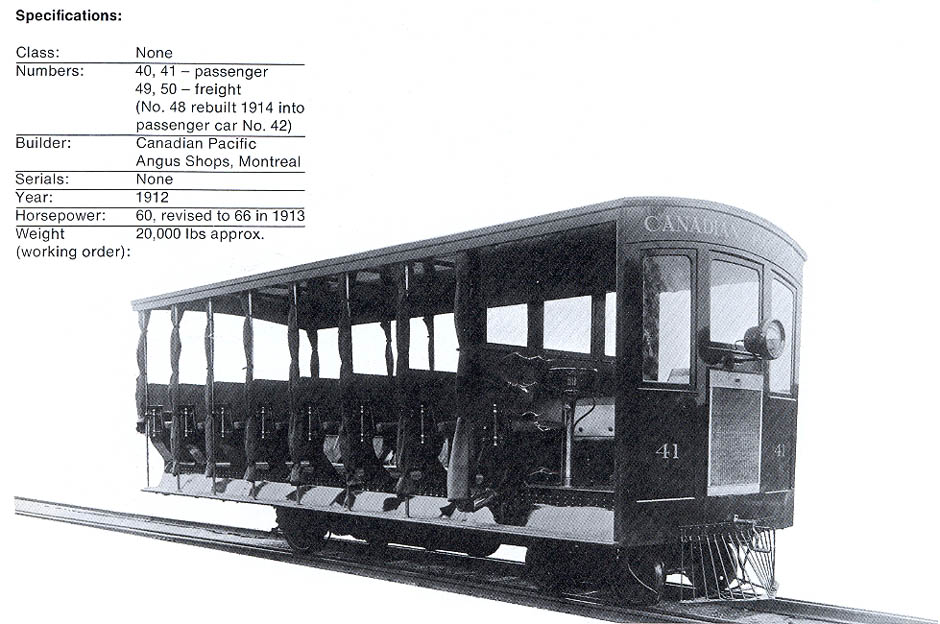|
Rail Cars |
 |
|
 |
|
by Omer Lavallee
While the impression is widely held that the use of internal combustion for railway motive power is a recent innovation, we illustrate in this instalment a This |
these engines proved unequal to the
average 4% grade of the line, which connected the hotel with Canadian Pacific
transcontinental passenger trains at Lake Louise station, and they were replaced by 66
horsepower An interesting feature of the Lake Louise Tramway was that it was narrow gauge, 36 inches, compared to the standard gauge of 4 feet 8 1/2 inches which has always been used on the Company's rail lines, |
and is today used exclusively by CP Rail,
along with about 60% of the world's railway mileage.
Though the Lake Louise Tramway functioned only in the summer months, during the hotel's operating season, the mechanical success of these little cars inspired later, larger gasoline and |